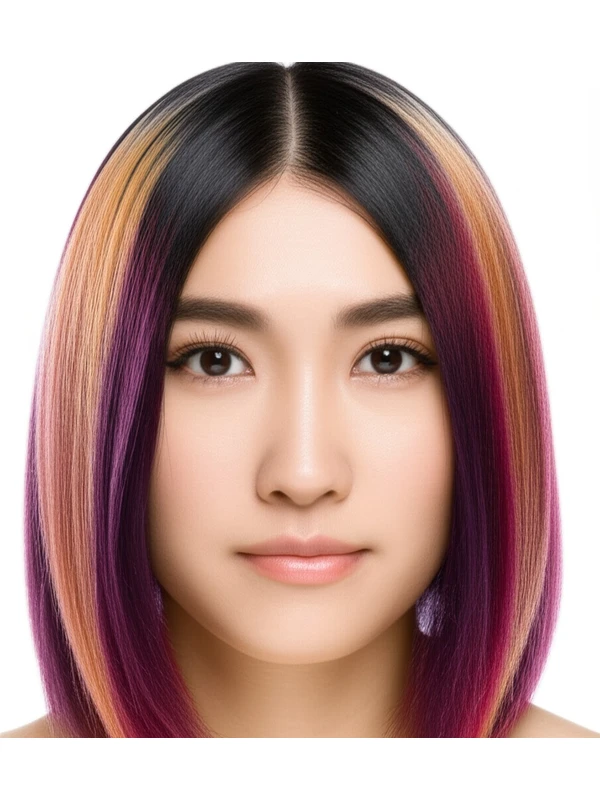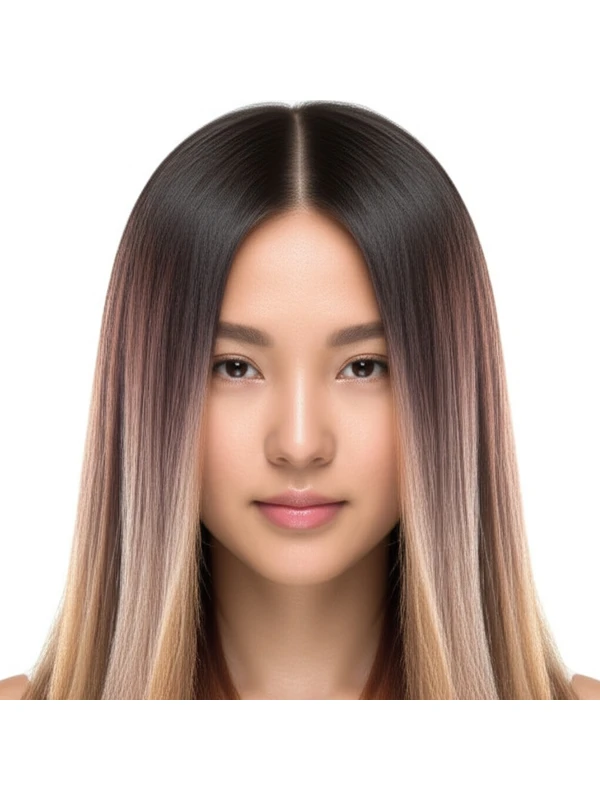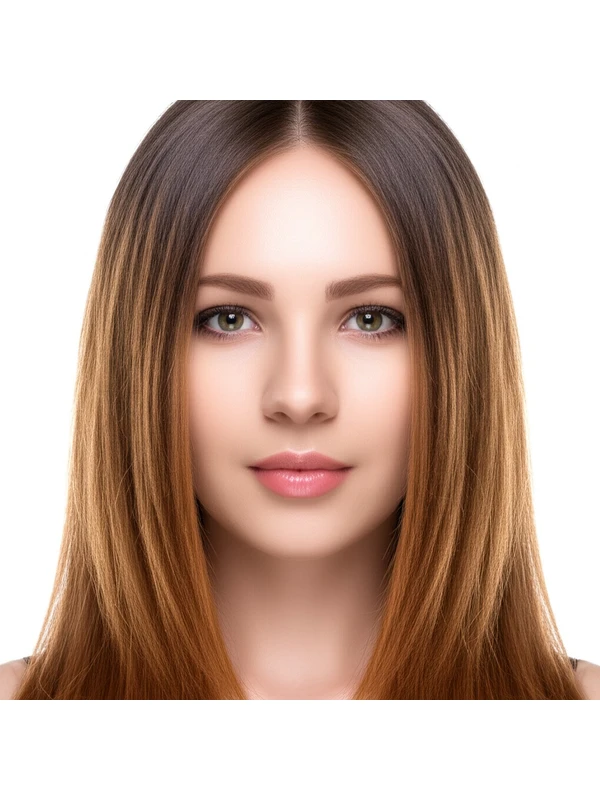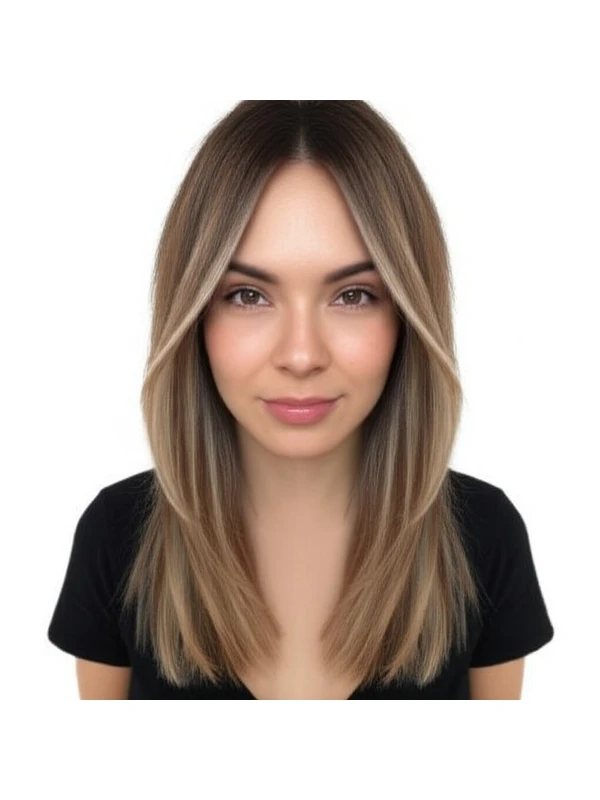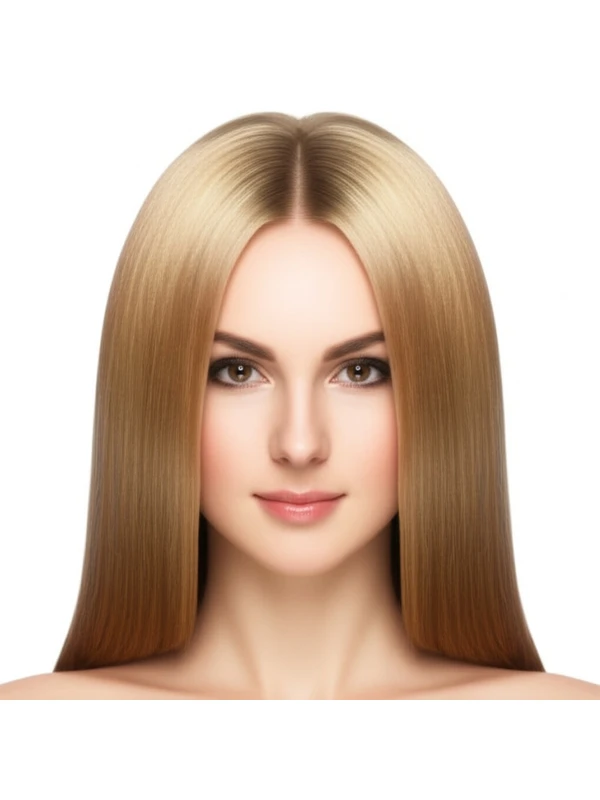#Color Blocking: A Bold Hair Transformation
Color blocking is a striking hair coloring technique that creates sharp contrast and defined sections of color. It’s all about clean lines and impactful visual separation – think graphic blocks of different hues rather than blended shades. Let's dive into everything you need to know!
#1. Definition & How it Works
Color blocking isn’t a subtle process; it delivers a statement look. Here's how stylists achieve this effect:
- Tools: Foil, brushes, color mixing bowls, gloves, sectioning clips, towels.
- Placement: Sections of hair are carefully isolated and wrapped in foil. The placement is key – think geometric shapes or distinct panels rather than a blended application. The contrast between the colored sections and the natural hair is deliberate.
- Timing: Processing time depends on your starting color level, desired result, and the specific developer used by your stylist. It's crucial to follow professional instructions precisely. Over-processing can damage hair; under-processing won’t achieve the intended color depth.
- Technique Variations: While traditionally sharp lines are key, modern stylists sometimes soften edges slightly with a subtle blending technique for a more wearable look.
#2. Best Use Cases: What Color Blocking Achieves
Color blocking isn't just about aesthetics; it can also address specific hair goals:
- Dimension & Impact: It’s the go-to choice when you want a dramatic, high-contrast look that turns heads.
- Root Blur (with Modification): While pure color blocking is defined, stylists can subtly soften the root line to create a less harsh transition by blending the edge of the colored section slightly. This isn't true "root smudge," but offers some softening.
- Face-Framing: Strategically placed blocks can highlight or contour facial features. Lighter colors brighten, while darker shades add definition.
- Coverage (Limited): Color blocking can cover a small amount of gray hair within the blocked sections, but it's not primarily intended for full grey coverage. A more solid color application is better suited for that purpose.
#3. Who It Suits: Finding Your Perfect Fit
Color blocking isn’t one-size-fits-all. Consider these factors:
- Natural Color Level: Works best on levels 2–6 (light brown to dark blonde). Those with darker starting colors may require more lifting, potentially impacting hair health.
- Undertone: Cool skin tones often look great with cool-toned color blocks (ashy blondes, icy browns). Warmer skin tones can shine with warmer shades (golden highlights, copper accents). Consult your stylist for personalized advice.
- Hair Type/Texture:
- Straight Hair: Showcases the sharp lines beautifully.
- Wavy Hair: The waves add movement and dimension to the blocks.
- Curly & Coily Hair: Can be adapted, but requires careful consideration of curl pattern and density to avoid uneven color distribution. Smaller, strategically placed sections are often best.
- Hair Density: Thicker hair can handle more substantial blocks; finer hair may benefit from thinner sections for a less bulky look.
- Hair Length: Works well on all lengths, but the impact is most dramatic on medium to long styles where the blocks have room to shine.
- Lifestyle: Color blocking demands commitment and maintenance (see section 5). It's ideal for those who enjoy bold looks and are willing to dedicate time and budget to upkeep.
#4. Compared to Similar Techniques
Understanding how color blocking differs from other techniques is key:
- Balayage vs. Foilyage: Balayage involves hand-painted highlights with a softer, more blended effect. Foilyage combines balayage painting with foils for faster processing and brighter results. Both lack the sharp lines of color blocking.
- Highlights: Traditional highlights involve weaving sections of hair and applying lightener to create subtle dimension. Color blocking is much bolder and more defined than traditional highlights.
- Root Smudge/Shadow Root: These techniques focus on softening the line between the roots and colored lengths, creating a seamless transition. Color blocking intentionally maintains a clear demarcation line.
#5. Maintenance & Longevity
Color blocking requires dedication:
- Salon Timing: Expect initial application to take 2-4 hours, depending on hair length, density, and desired color intensity.
- Toner/Gloss Refresh: Blonde blocks often require toner or gloss applications every 6–8 weeks to maintain the tone and brightness. Other colors may need similar refreshers as needed.
- Grow-Out Behavior: The contrast line will be visible as your hair grows out, requiring regular salon visits to maintain the desired look. This is a key difference from blended techniques where grow-out is less noticeable.
- Budget/Time Planning: Be prepared for higher costs and more frequent salon appointments compared to lower-maintenance coloring techniques. Factor in $150-$400+ per visit, potentially every 6-8 weeks, depending on location and stylist expertise.
#6. At-Home Care Tips
Protect your investment with these tips:
- Wash Cadence: Wash hair less frequently (2–3 times a week) to preserve color vibrancy.
- Heat Protection: Always use heat protectant spray before using styling tools like flat irons or curling wands. Heat damages colored hair, causing fading and dryness.
- Color-Safe Care: Use shampoos and conditioners specifically formulated for color-treated hair. Avoid products containing sulfates, which can strip away color. Consider a deep conditioning mask once a week.
- UV Protection: Sun exposure fades hair color; use UV protectant sprays when spending time outdoors.
#7. Pros & Cons
Pros:
- Dramatic and eye-catching look
- Adds significant dimension
- Can highlight or contour facial features
- Offers a modern, edgy style
Cons:
- High maintenance and frequent salon visits required
- Visible grow-out line needs correction
- Can be damaging if not done correctly (especially with multiple lightening processes)
- Requires a significant financial investment
#8. Salon Consultation Script Prompts
Prepare for your consultation by thinking about these questions:
- What is my natural hair color level?
- Do I have warm or cool undertones in my skin?
- How much time and money am I willing to invest in maintenance?
- Am I comfortable with a high-contrast look that requires frequent touch-ups?
- What specific colors do I envision for my blocks (e.g., icy blonde, copper red)?
- Are there any areas of my hair where the color should be concentrated or avoided?
#9. FAQs
- Can I DIY color blocking at home? While technically possible, it's strongly discouraged. The precision required for clean lines and even application is best left to a professional stylist who can assess your hair’s condition and achieve the desired result safely.
- How much damage will color blocking cause? Any lightening process has the potential to impact hair health. A skilled stylist will take steps to minimize damage, but it's important to be aware of the risks and prioritize hair care.
- What if I don’t like the grow-out line? The stark contrast can be softened with a root smudge or shadow root technique, but this requires another salon visit.
- Can color blocking work on dark brown hair without significant damage? It's possible, but may require multiple sessions and careful product selection to lift the hair gently. A strand test is essential.
- How long does color blocking last? The color itself will fade over time (typically 6-8 weeks), while the contrast line becomes more visible as your hair grows out.
- Can I change the colors in my blocks later? Yes, but it’s best to consult with your stylist to ensure compatibility and avoid unwanted tones or damage.
- Will color blocking work on previously colored hair? It depends on the existing color and its condition. A consultation is crucial to determine feasibility and potential challenges.
- Is color blocking suitable for fine hair? While possible, it’s important to use thinner sections and lightweight products to avoid weighing down the hair.
